
This interview is part of our interview series, where we curate stories of regular people that decided to design a life they love. (click here to learn more).
Michelle from FrugalityAndFreedom.com
Some links to the products mentioned below are affiliate links, meaning that if you click and make a purchase, Nomad Numbers may receive a commission at no additional cost to you. For more information please review our disclaimer page.
Michelle is a 36 year old event manager/festival organiser from South Australia. She currently lives in New Zealand where she spends time on a short work contract, after completing a full year of slow travel around the USA in June 2019. Since 2007 she has been to 40 countries, spread across annual trips but she still calls Australia home!
Michelle became interested in the concept of financial independence in 2012, discovering it via Early Retirement Extreme and Mr Money Mustache blogs. She has been learning about general personal finance topics to make the most of her money, with expectations of limited income potential in her chosen career. FI provided a clearer, big picture motivation for her savings efforts, which had previously been focused on funding her next overseas vacations or dry spells of work.
Michelle semi-retired in 2017 at age 33 and now works roughly half the year, then travels for the rest. She reached a “Coast FI” level in her investments; enough saved that it will grow over time without further effort, to reach her ultimate financial independence goal in 10-15 years. In the meantime, her seasonal and freelance work covers her low living/travel expenses of US $20,000 per year.
Without further ado, let’s hear from Michelle.

Lifestyle change
What does a typical day in your life look like for you today? And how does it differ from your lifestyle before?
Michelle: In my “work phase” of the year, a typical day involves office-based project management for festivals and major events. By evening, you’ll often find me caring for pets as a housesitter, enjoying comfortable free accommodation while I write at my blog FrugalityandFreedom.com or map out my next big trip. While I have my current commitments in Auckland, I’m also taking the opportunity to have weekend mini-breaks across New Zealand.
In my “travel phase”, I can usually be found exploring city environments on foot, seeking out the must-try street food or local snacks, visiting art galleries or theatre shows, and spending leisurely afternoons writing in cute cafes. Tending towards a frugal, slow travel style, I love waking up in my housesit or hostel with the freedom to choose what I do each day. I often organise local meetups of FI-interested folk during my travels, which has led to some great friendships.
Before getting on the FI journey, my lifestyle involved year-round full-time work or a series of back-to-back contracts, with short vacations as a reprieve. I often felt like I was working for the weekend, with a growing sense of claustrophobia in having to stay in one place. As time passed and my FI stash has grown, I’ve been incorporating more and more freedom into my life in different ways – with my next challenge being to transition to primarily remote work only.
Check out the infographic below to contrast how Michelle’s priorities shifted before and after getting on the FI journey:

What led you to decide to change your lifestyle?
Michelle: Encouraged by big questions raised by FI bloggers and books such as “Your Money or Your Life”, I aim to continually cultivate self-awareness of what brings me joy (or not). It was clear that working year-round full-time hours was not my idea of fun; however, I liked having some paid projects in this enjoyable industry for a sense of purpose. I decided on this semi-retired path for a good mix of relaxation and productive time, even as my preferred style of both work and travel continue to evolve. This decision was helped by having gradually built a decent stash of savings over multiple years, plus having a low-cost lifestyle through habitual frugality – for me, this simply means using my resources efficiently on the things I prioritise.
What do you enjoy the most in your industry that gives you a sense of purpose? What advice would you give to people that aren’t finding purpose in their daily jobs?
Michelle: I enjoy seeing a project come to fruition and love playing a part in creating memorable experiences for event attendees. To me, festivals and events enrich local communities through shared experience and collective sense of awe. I am privileged to work with talented, like-minded staff to deliver projects, going through the highs and lows together with our efforts aligned towards common goals.
For those looking to find purpose, I’d suggest reflecting on those elements of your job that light you up and focusing attention on those where you can. Look to expand these components in your role where possible, or seek different projects or jobs where this sense of purpose can come through.
What would you say were some of the biggest challenges to adjust to this new lifestyle?
Michelle: Semi-retirement has meant forgoing some career advancement opportunities, as senior roles in the industry typically require year-round commitments. Admittedly, the added responsibility does not appeal to me as it once did, but it is still hard to shake the idea I should be aspiring to certain career trajectories to be successful… When I pause to reflect back on my priorities again, I quickly remember that freedom is what I value much more!
What life philosophy has been guiding you through this journey?
Michelle: I live with a theme of curiosity, valuing having different experiences and experimenting to find my own version of happiness. I’m continually iterating and designing my day-to-day life to be something I don’t want to fully retire from! I appreciate the “Slow FI” approach advocated by one of my favorite blogs The Fioneers: “exercising freedom along the way and making intentional choices that enhance joy along the FI journey, even if this delays financial independence”.
What did your friends and family think of your plan to take on early retirement? What did they think when you announced to them that you will be quitting your day to day job and starting to travel?
Michelle: My friends and family know I always have an upcoming trip in the works, even as I am finishing the last one. They’ve long since ditched the expression “trip of a lifetime” (phew) and tend not to blink an eye anymore when I mention long-term solo travel plans, having completed two six-month trips since 2013. That being said, I tend not to use the term “semi-retirement” in real life yet and currently blog anonymously, as I know identifying this way and sharing my FI path might be confronting for some who think I’m quirky enough already!
I do need to put in effort to communicate with friends and family more regularly on extended travels. I’m working at getting better at this, so I don’t miss out on maintaining these valuable relationships for the long-term – including seeing friends’ young children grow up.
Travel

How would you describe your travel style?
Michelle: I have a budget “backpacker” travel style, spending around US$55/day all in. I typically travel solo, occasionally travelling for shorter periods with friends or catching up with former coworkers or those I’ve met through the financial independence community.
You’ll often find me staying in hostel dorm rooms or Airbnb private rooms. I started housesitting a year ago and am in love with this excellent travel hack; I’ve enjoyed comfortable homes in the company of pets for free accommodation in USA and New Zealand so far.
I keep my transport costs down using long distance buses, trains and only occasional discount flights; catching local public transport; and booking some international flights on frequent flyer points from credit card hacking. I often enjoy cheaper activities, such as visiting museums and parks or seeing shows on discounted tickets.
Keeping my usual travel costs low means I can comfortably splurge on pretty cool experiences, such as going to Disneyland for New Years Eve, enjoying a fan camp for my favourite musician in Havana, or attending the world’s largest cheese festival in Italy (twice). I’ll often sign up to volunteer at festivals or events during my travels, getting free tickets in exchange; including platinum access for SXSW or entry to UK’s Glastonbury music festival!
In your own experience, what has been the most challenging and also most rewarding aspect about being a solo female traveler?
Michelle: The most rewarding aspect of solo travel is having ultimate control over my itinerary, daily activities and expenditure. I can spend entire days writing in cafes, wandering through obscure museums at my own pace, or overindulging in cheese or ice-cream without guilt or obligation to entertain others. I also appreciate the personal growth and ever-expanding self-reliance that comes from traveling extensively on my own. I don’t feel many downsides, but sometimes I miss not having others with shared memories of my favorite travel experiences.
If you could never travel again and could pick any city to be confined to, where would you pick? And why?
Michelle: New York City! I know it’s a cliché, but I do love the place. Every cuisine I could want, with an abundance of theatre to enjoy! With so many cultures converging on this city and different vibes in each neighbourhood, I would still feel like I was travelling.
How much stuff do you travel with?
Michelle: I aim to travel light. For example, I used my carry-on sized 35L Tortuga backpack plus small satchel on a six-month European summer trip in 2017. I enjoy the feeling of nimbleness and being able to walk around or catch public transport without too much hassle; plus I save on checked baggage fees when I did fly. I’ll happily live with the downsides of doing laundry more regularly and regularly repeating outfits for photos!
For my year in the USA, I started with this set-up but accumulated winter gear and some sentimental items along the way, so ended up adding a bag on wheels for the extra load.
What’s something you pack that’s not absolutely essential but you like having it?
Michelle: My Olympus OMD E-M10 MkII camera. A small mirrorless camera I bought second hand with two interchangeable lenses that takes gorgeous photos – even if I’m still learning how to move beyond auto-mode.
Spending
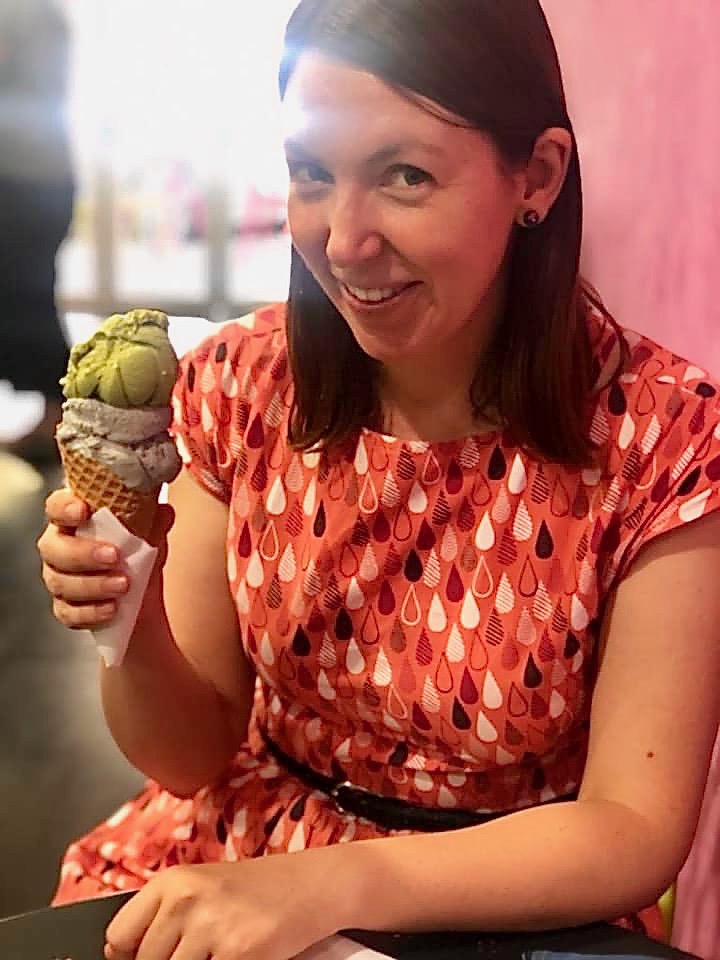
How much money do you spend on travel per year? How many days of travel does this represent? How much does this represent per day and per person?
Michelle: From June 2018 – June 2019, I spent the full 12 months traveling across the USA, with costs averaging out to US$55/day or US$20,000/year. This is pretty similar to my usual rate of spending of AUD$75/day. This includes everything from food, accommodation, transport to insurance, etc. Since I’ve started housesitting in the last 12 months, I expect my costs to drop lower.
Here is the breakdown of my monthly spending during my USA trip:
| Spending Category | Monthly amount (in USD) |
|---|---|
| Accommodation | $625 |
| Groceries | $100 |
| Dining out / Take-out | $220 |
| Activities | $204 |
| Health Care / Health Insurance | $80 |
| Local Transportation (within cities) | $120 |
| Ground Transport (between cities) | $106 |
| Flights (between cities & internationally) | $163 |
| Other expenses (clothing, phone, laundry, gifts, etc) | $81 |
| Monthly Total | $1,699 |
| Yearly Total | $20,388 |
| Per Person, Per Day Total | $55.85 |
How do you fund your travel (savings/work whilst travelling/other)?
Michelle: I typically fund my travels from savings during my work phase of the year. While in the USA, I had a J1 “working holiday”-style visa where I picked up some odd jobs to subsidise my travels. From 2020 onwards, I aim to fund travels by remote work in event consulting and freelance writing on the road. I don’t dip into my FI stash, so I can let that grow through compounding for the future.
Community

How do you meet people when you travel? Do you have any tips for people that are having challenges meeting people while traveling?
Michelle: I’ll often look up the local chapters of financial independence groups like Choose FI and Mustachians, or reach out to nomad groups such as the 7in7 Digital Nomad community. If there aren’t existing events already, I’ll often take the initiative to set up meetups with those groups. I also check social media for FI bloggers or nomads in town to invite for coffee, which often leads to great conversations and new friendships.
I also meet new people through volunteering or working on events during my travels. Friendships are easier to make when there is already a mutual interest, such as at film or music festivals. I also search Meetup.com, local Facebook groups, or event listing websites for upcoming activities to meet others.
You mentioned earlier how much you got by volunteering your time and it seems to be quite a rewarding experience and a great way to connect with people. Any recommendation for people that would like to find such volunteering opportunities on their travels?
Michelle: Yes! Search online for event calendars for where you want to visit. Volunteering positions are often listed on the official websites of events and festivals 3-4 months beforehand; or you can contact their info email addresses to find out details. Plan to arrive in a city several days in advance, as there is usually volunteer training required. Make sure you can commit to working the hours involved, then enjoy the perks that often include free tickets!
Last but not least
What is one resource (blog, podcast, book besides your own) you recommend for those that want to pursue your lifestyle?
Michelle: Semi-Retire Plan blog highlights different ways to approach semi-retirement and how you can benefit from this lifestyle on the way to financial independence.
What advice do you have for others who are considering this type of lifestyle?
Michelle: If you are wanting to split your time between seasonal work and time-off, have a look into industries in which short-term contract work is common; such as in events or tourism. You could also check if your current employer is open to alternative working arrangements, such as remote work or a sabbatical for more travel opportunities.
For those under 30-35 years of age, check into “working holiday visa” options for other countries to mix work and exploration. As an Australian citizen, I have used these visa types for the UK, USA and Canada (upcoming in 2020).
Also, continue to build up long-term savings by increasing your income and/or lowering your expenses, so you can enjoy the security of a strong financial position behind you that can grow throughout your semi-retirement.
Tell us one belief that is held up by society as ‘common sense’ but that you disagree with and why.
Michelle: Belief that you really need a car to get by. Not true! I have never owned a car and get around easily by public transport, ride sharing or on foot. I attribute a huge chunk of my savings to avoiding car ownership.
Rapid Fire Questions
| What is your favorite travel destination & why? | Edinburgh in Scotland, with the world’s largest arts festival each August. |
| What was the most creative thing you’ve ever done to save money during your travels? | Using Indeed.com’s Job Spotter app, getting paid for photos of “help wanted” signs in store windows. In the USA, I redeemed the Amazon credit for gift cards on Uber, Airbnb and Hotels.com. https://www.frugalityandfreedom.com/job-spotter-review/ |
| What was your biggest travel mistake? | Getting complacent with leaving valuables hidden but unlocked in a hostel room in Italy, after feeling so relaxed and safe in that city. Ciao, camera #1. |
Thank you Michelle for taking the time to share your story with us!
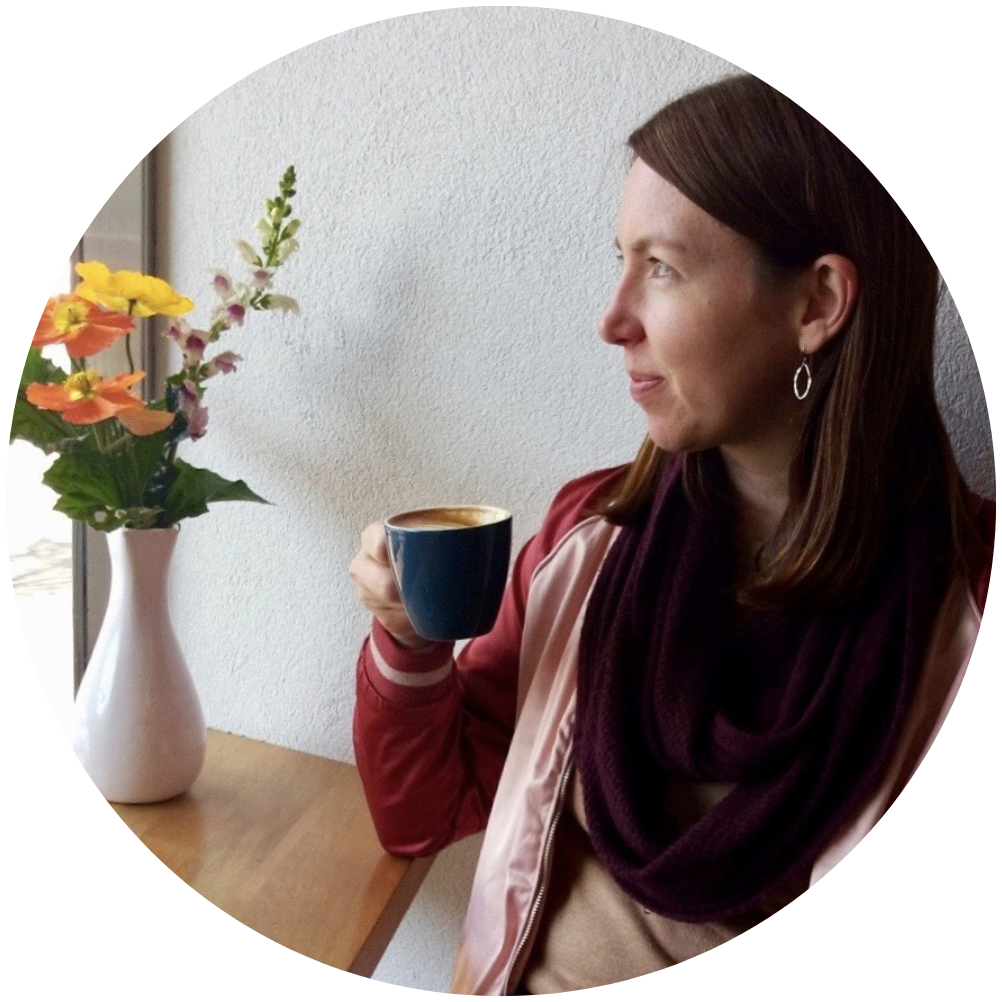
If you want to know more about Michelle, you can find them at FrugalityAndFreedom where she share more details about her journey.
You can also find her on the following social media platforms:
- Twitter: @FrugalityFreedm
- Instagram: @frugalityandfreedom
The Bottom Line
I personally hope that Michelle’s story will inspire you to take 15 minutes today to pause what you are doing and ask yourself what is the most important thing you want out of your life. This can be a pretty hard question to answer but the good news is that you don’t have to find your perfect answer today. What matters is making small and incremental steps towards it. It actually took Michelle many iterations to get where she is today and this is actually something she is still actively working on! She is a big proponent of exercising freedom along the way and making intentional choices that enhance joy in her life.
Here are the main lessons we took away from this interview:
- Lesson 1 – You can choose the life you want! A lot of people never realize they have this incredible power to design the life they truly want for themselves! Through reading blogs and life-changing books, plus experimenting with implementing these lessons, Michelle realized that freedom was something she wanted above anything else. As she said, she is “continually iterating and designing [her] day-to-day life to be something [she] doesn’t want to fully retire from”.
- Lesson 2 – You don’t have to stop working to live a fulfilled life! A lot of people see traditional retirement as the only destination to live their best lives. Rather than trying to rush to get there as fast as she can, Michelle has decided instead to focus on her journey. She went into an industry that gave her a sense of purpose and now continues to evolve how she does that work (full-time to seasonal to remote), so her employment is an enjoyable part of life. One of her pieces of advice is actually to: “reflect on [the] elements of your job that light you up and [focus] attention on those where you can”.
- Lesson 3 – Keep your spending low! It is a common belief for many people that the more money you earn, the wealthier you will become and the more control you will have on your life (because you will be able to buy more time in your life – which we demonstrated as being paradoxal). Instead of focusing on building her income significantly, Michelle decided to optimize her spending to reduce it by using clever tactics. These include housesitting (to get free accommodation), long distance bus or train travel (which are more affordable than flights), redeeming international flight rewards using travel hacking, enjoying cheaper activities (visiting museums, parks, seeing shows on discounted rates) or volunteering on cool festivals and getting free access in exchange (like SXSW). This gives her the option to also splurge when she feels like it on unique experience (like going to Disneyland on New Year’s Eve). This is ultimately helping her to build up long-term savings.
Call to action
What do you think about this story? We would love to hear from you, so feel free to share your feedback by leaving a comment below.
Sometimes we need to hear about others making unconventional decisions before we can have the confidence to make our own. If you have(or are on a path to) an unconventional journey to improve your life that has a travel component to it and are interested to share it, please reach out to us as we would love to feature your story.
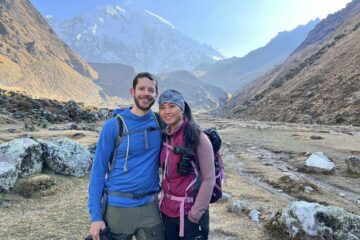
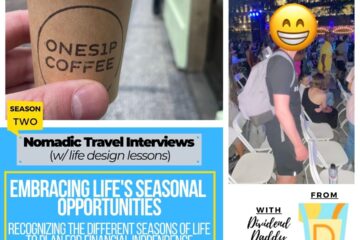
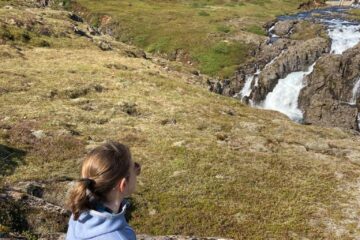
5 Comments
Mr. SR @ Semi-Retire Plan · March 15, 2020 at 8:24 pm
Thanks for the shoutout!
I love how Michelle approaches semi-retirement and how she’s able to work in moderation while traveling. I’ve enjoyed talking with her in the past and this guest post was no exception. This was a fun read!
Michelle @ FrugalityandFreedom · March 28, 2020 at 5:14 am
You’re very welcome, Mr. SR. Thanks for stopping by and I look forward to crossing paths with you on my adventures one day!
Retirement · September 8, 2020 at 10:42 pm
I like that you discuss how travel, spending habits, and volunteer work can affect semi-retirement. I don’t see enough people break it down into sections. Really helpful read. Thank you!
Sharing stories of nomads during the coronavirus pandemic - Nomad Numbers · March 25, 2020 at 10:12 am
[…] #010 – Semi-retirement at age 33 […]
What we learned from interviewing nomadic travelers - Nomad Numbers · May 16, 2020 at 7:37 am
[…] Semi-retirement at age 33 […]